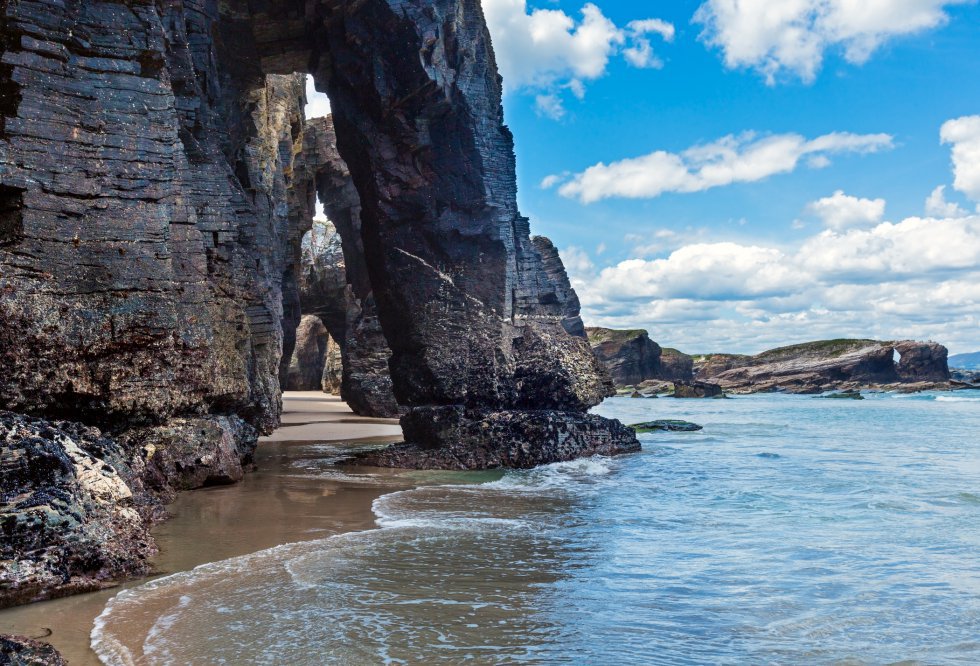From mountian lakes to deserts and beaches, natural scenery which is certain to captivate any visitor can be found all over the country, Spain has it all. Few countries offer such a variety of breathtaking landscapes.
Discover my top 12…..(I couldn’t cut it down to 10!)
1.Garajonay National Park (La Gomera, Canary Islands)
Thanks to its geographic location and subtropical climate, the center of La Gomera island preserves an extraordinary jungle site, featuring an abundance of protected species. The forest at Garajonay National Park presents visitors with an image of the earth as it was 60 million years ago.
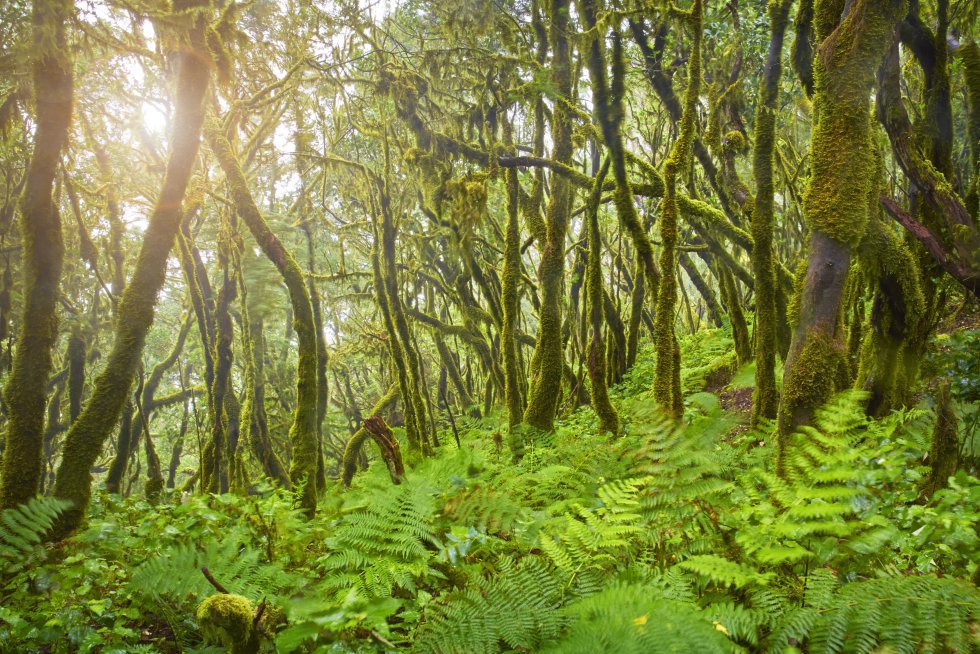
2. Sakoneta Beach (Basque Country)
An hour's drive from San Sebastián, land and sea intertwine on the lovely Sakoneta beach, which shines with its greatest splendor at low tide. Erosion has carved continuous, vertical patterns into the cliff walls, known to geologists as flysch, and it makes the rocks especially scenic.

3. Ordesa Valley (Aragon)
At the heart of Ordesa y Monte Perdido National Park, through the wide array of climates brought by the deep valleys and the high mountains, a large inventory of species abound. The result is a site with an incredible diversity of living organisms. Eagles thrive, as do marmots, and pine trees grow beside oaks in the forests.
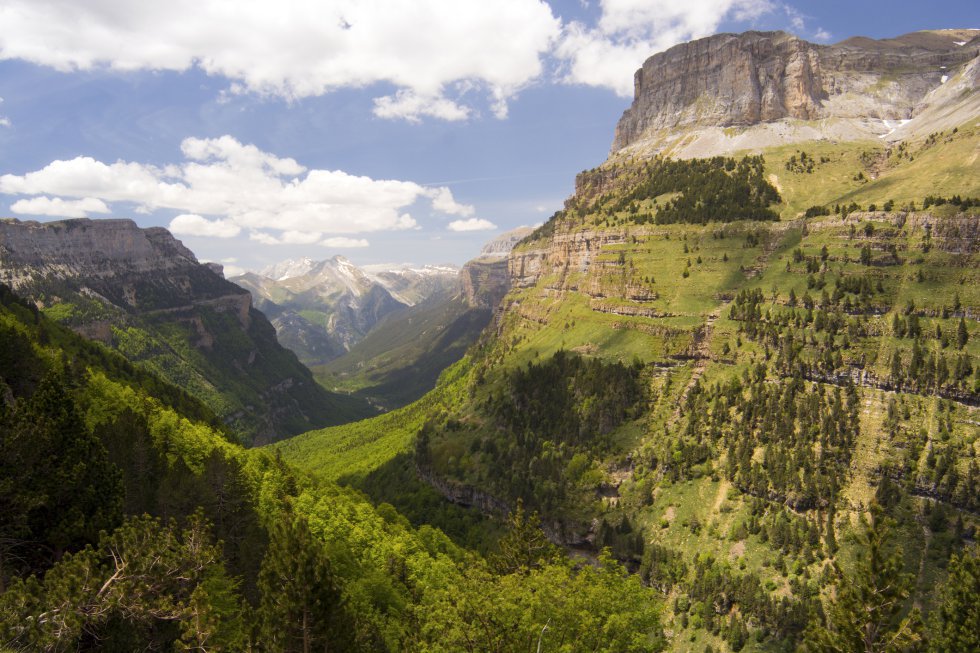
4. Bardenas Reales (Navarre)
These miniature, desert-like badlands in northern Spain are unique due to their location in a region that is much better known for its wet and green landscapes. Erosion from wind and rainfall have carved out surfaces that are commonly referred to as “elephant hides.”

5. Aigüestortes i Estany de Sant Maurici National Park (Catalonia)
Located in the central Pyrenees, the Aigüestortes i Estany de Sant Maurici National Park stands out for its huge mountains towering more than 3,000 meters above sea level. The eastern part of the park is especially stunning, as the reflection of the mountains can be seen on the water. The installation of ramps in certain areas also means that people with limited mobility can also enjoy the beauty.
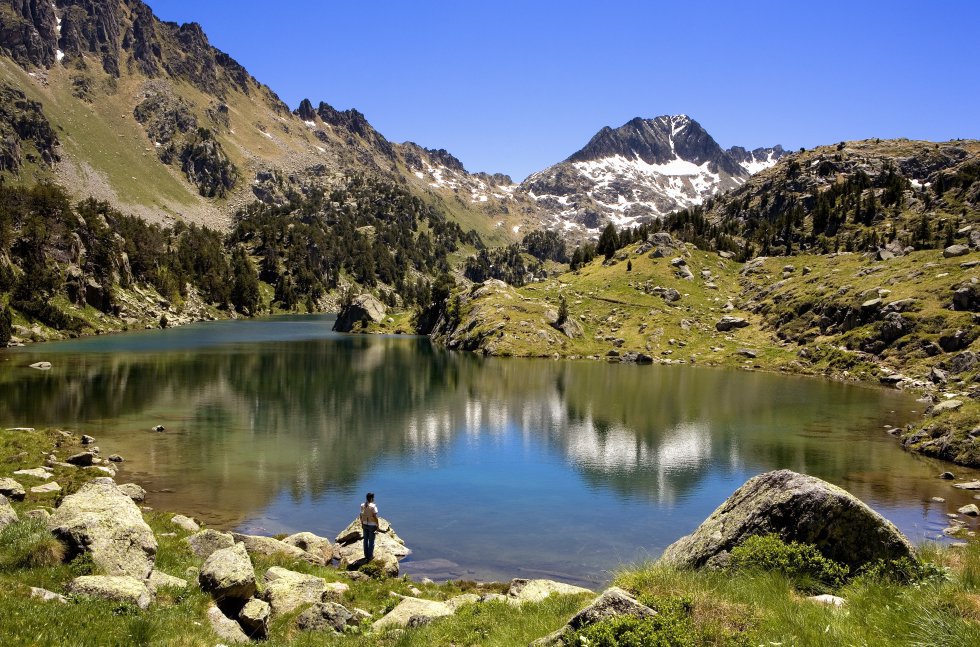
6. Lakes of Covadonga (Asturias)
The Lakes of Covadonga are situated 1,000 meters up in the Picos de Europa mountains. Around them, herds of horses, cows and goats graze at their leisure in a calm and tranquil environment. Visitors are also encouraged to take advantage of the surrounding hiking trails – no hiking or climbing experience is required to embark on them.
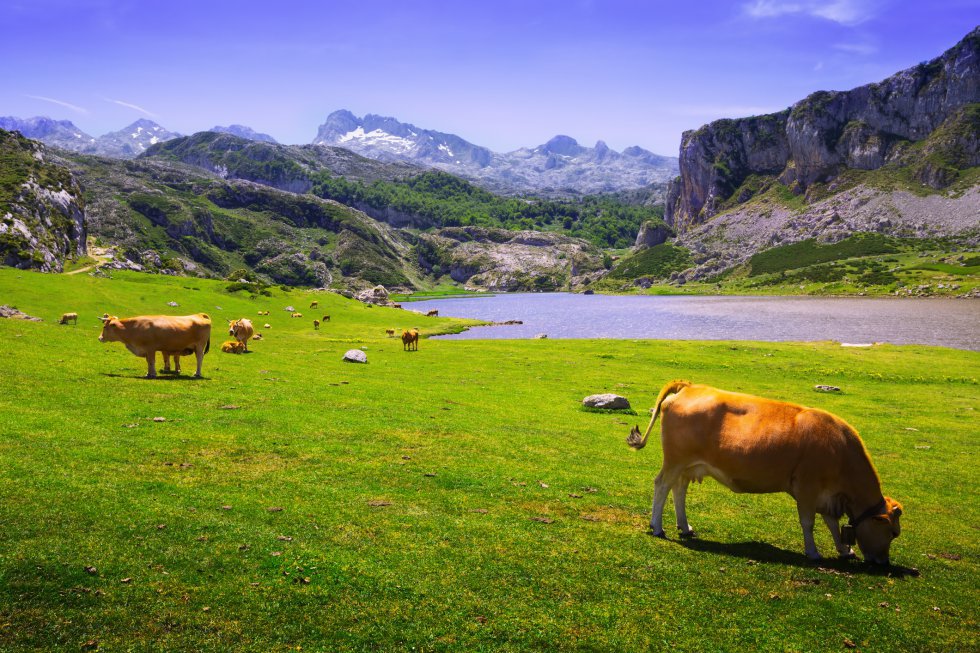
7. Cabo de Gata (Andalusia)
Cabo de Gata Natural Park is a volcanic complex that also features traces of human activity in the area ranging castles to 19th century mining villages and 20th century flour mills. As beautiful as the land is the sea that lines its coast, perfect for swimming and sailing.
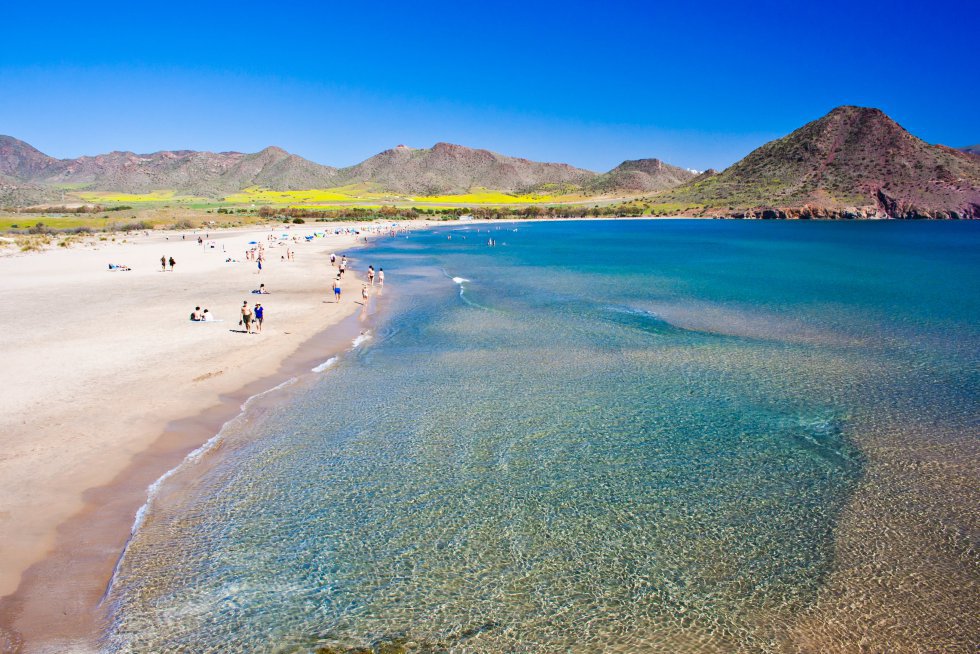
8. Las Médulas (Castilla y León)
The Romans scavenged these hills of León for gold and ended up creating the largest open pit mine in the history of their empire. What remains is a striking contrast or red sand against the green forest. Visitors can walk inside the holes bored by the Romans or view them in their entirety from the Orellán observation deck. It’s been a World Heritage Site since 1977.

9. Garrotxa volcanoes (Catalonia)
The La Garrotxa Volcanic Zone Natural Park features almost 40 different volcanoes. Despite the landscape being formed by volcanic activity, the area’s rainy climate has resulted in the long dormant volcanoes being covered in vegetation.
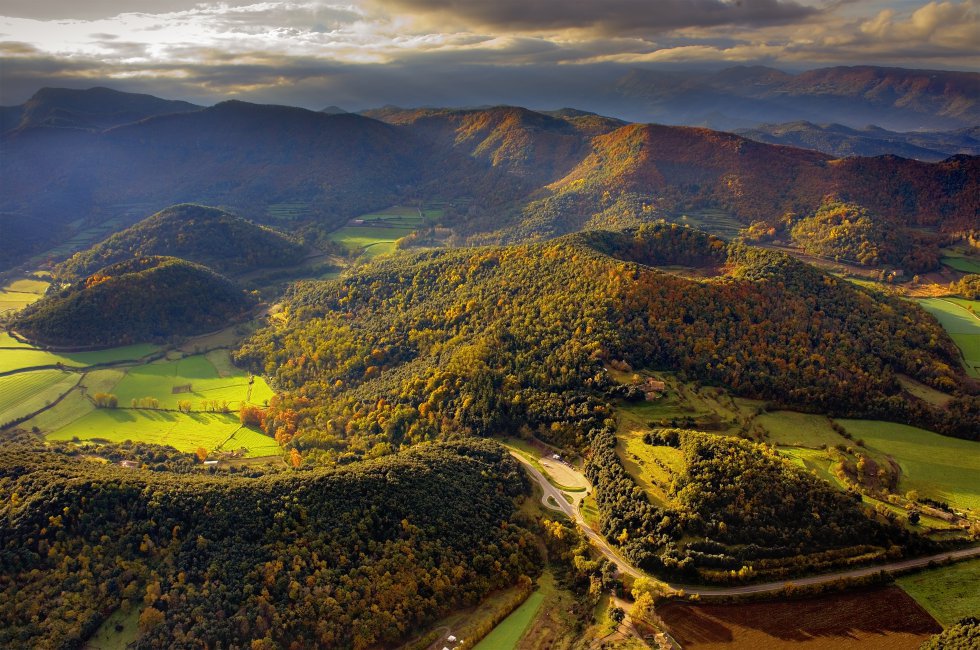
10. Naranjo de Bulnes (Asturias)
The peak of the mountain Urrielu, or Naranjo de Bulnes, is more than 2,500 meters above sea level. Although it’s not the tallest mountain in the Picos de Europa range to which it belongs, its vertical walls make it perfect for climbers.
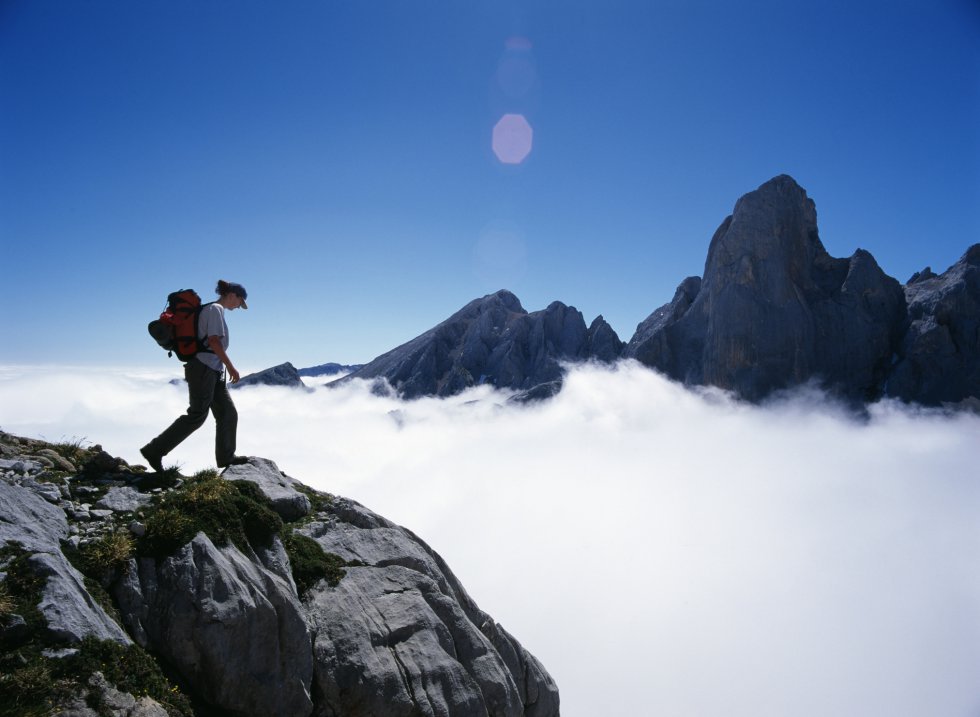
11. Teide (Tenerife, Canary Islands)
175,000 years ago, lava emerged from the Earth, giving shape to the Teide volcano, which is also Spain’s tallest mountain. Still active, it’s the third tallest volcanic formation in the world, rising 7,500 meters from the ocean floor. Because of its height above sea level (3,718 metres), it regularly snows at the peak, providing, in a single image, a beautiful contrast between winter wonderland at its summit and arid desert at its base.

12. Playa de Catedrales (Galicia)
On the coast of northern Spain near the Galician town of Ribadeo, waves crash against a series of arches that resemble a great cathedral. In fact, the proper name of this beach is Praia de Augas Santas (“Holy Waters” in Galician). It’s advisable to visit during low tide to admire the sand from the caves and the arches.
